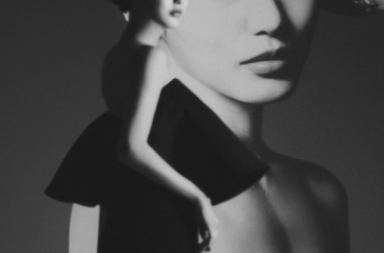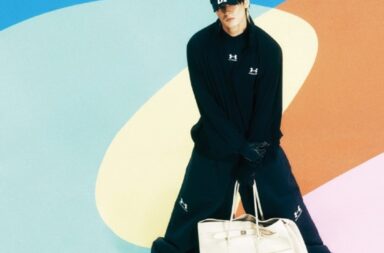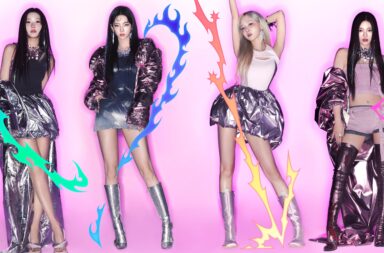
Picture it: a long, ornate dining table. Normally seating at least ten, and often laden with a decadent spread of luxurious food, tableware and decorations. There are possibly giant candle holders, maybe silver plates. The chairs are inevitably intimidating, sometimes quite grand. This scene is a familiar one everywhere from gothic fairy tale retellings to classical art. But the modern-day home of this most distinctive of symbols is the K-pop music video.
And you don’t need to look far at all to see why this is. Just glance across G-Dragon’s “One of a Kind”, B.A.P’s “Honeymoon”, Exo’s “Monster”, Hwasa’s “Maria” and “Twit”, IU’s “23”, Oh My Girl’s “Closer”, and many more, and you’ll notice the pattern. The long, rectangular table, normally sleek in style, and mostly laden with cutlery, crockery, and sometimes food. Idols will either be sat imposingly around it, stiff-backed and staring, or one individual will be asserting their dominance at the table’s head, possibly on top of it. The symbolism of these scenarios is rich, from social rigidity, through to decadence and even anarchy.
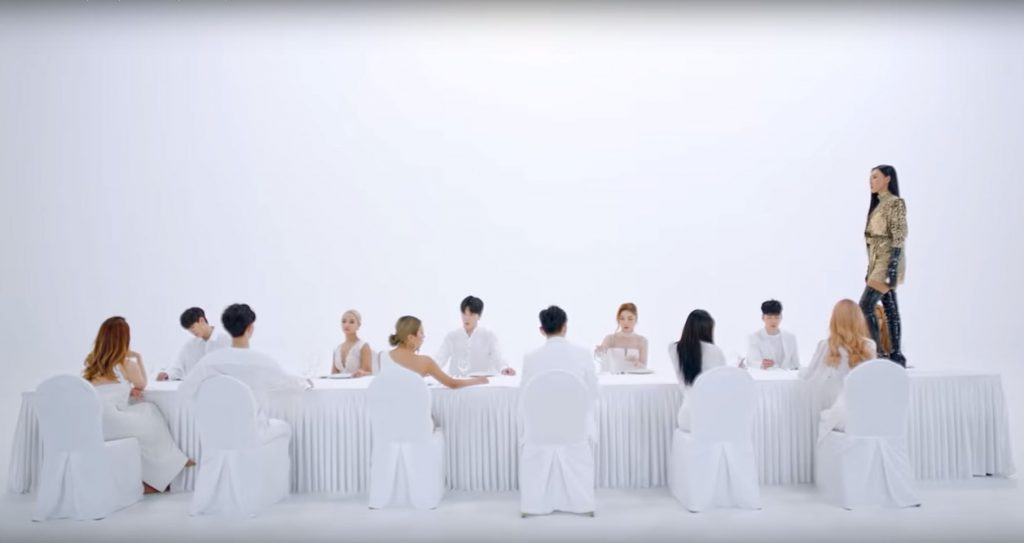
First, and most basically, a dining table is a communal place where people come together for a shared experience. This may seem like an overly simple observation, but the implications here run deep. For, as The Atlantic points out, this “symbol of solidarity” is also a “ritual of serving and eating”. A dining table is where people come together to enact certain social etiquettes and performances, where you have to use your manners and mind your words. Almost like a “stage”, as the article calls it. In MVs such as Twice’s “I Can’t Stop Me” and BTS’ “Blood, Sweat and Tears”, we see this rigidity through beautifully set places and expressionless members planted firmly in their seats. It’s important to note that there’s no food in these scenarios: the table represents only the formality, nothing more.
Both videos go on to shatter this stiffness in their own ways; BTS by standing on the table with a balloon (as you do), and Twice with a huge motorbike. This is where K-pop MVs have the most fun with this trope, as we see time and time again. An interesting side point to compliment this sense of anarchy: these dining tables are all completely Western.
Korea is a country known for its own communal dining style (see: the barbeque grill in the table), and one that traditionally had a “culture of small tables”. The tables in these MVs, being high and long, are not echoing anything specifically Korean. Whether this speaks to an attempt to be more universal, or to respect specifically Korean culture, is unclear.
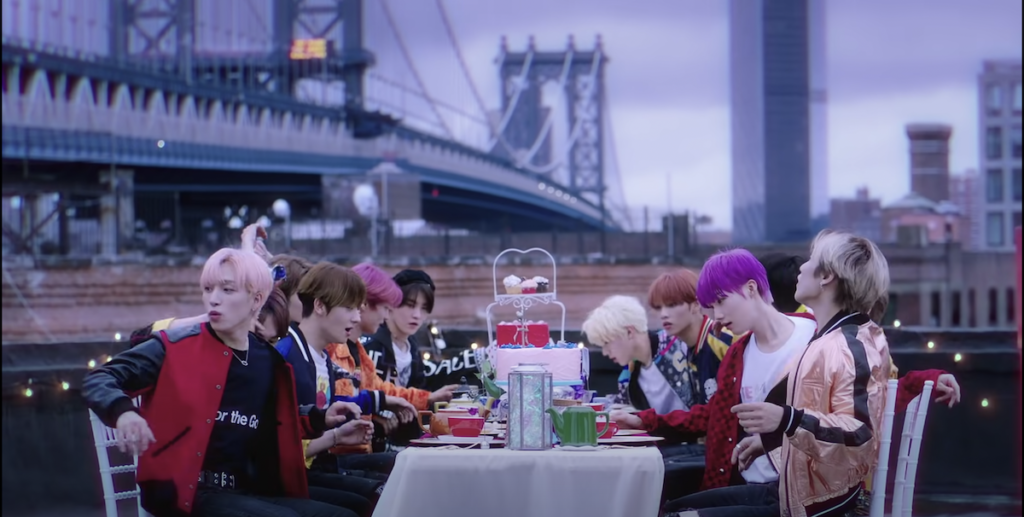
It might be considered slightly untoward to walk all over a Korean-style table, as Lia does in Itzy’s “Wannabe”, playfully kicking off the food and plates, or to dance as provocatively as Hwasa does for her uninterested guests in “Twit”. These examples show us the more literal elements of the table as “stage”, as well as a clear cypher for anarchy. If there’s one thing you shouldn’t do on a dining table, it’s stand on it. Coupled frequently with opulence (well-dressed guests in “Twit”, or beautiful cutlery, champagne and eventually a chandelier in Ateez’s “Answer”), this most simple, powerful rule-break becomes perhaps the quickest shorthand K-pop has for defying social customs, and eschewing material interests for something more internal.
Like the whimsical tea party in Alice in Wonderland, you can have the etiquette and its opposite all in one frame: sitting nicely before chaos reigns. This specific table setting has been referenced several times in K-pop MVs, perhaps most notably by The Boyz in their own New York Wonderland romp of “D.D.D”, and IU’s “23”. In the former video, this table setting is the final scene of the MV, a surreal yet joyful celebration out of place atop New York buildings. The juxtaposition here is more playful than openly unruly, with the surrealism of their tea party a world apart from the grittier skyline behind.
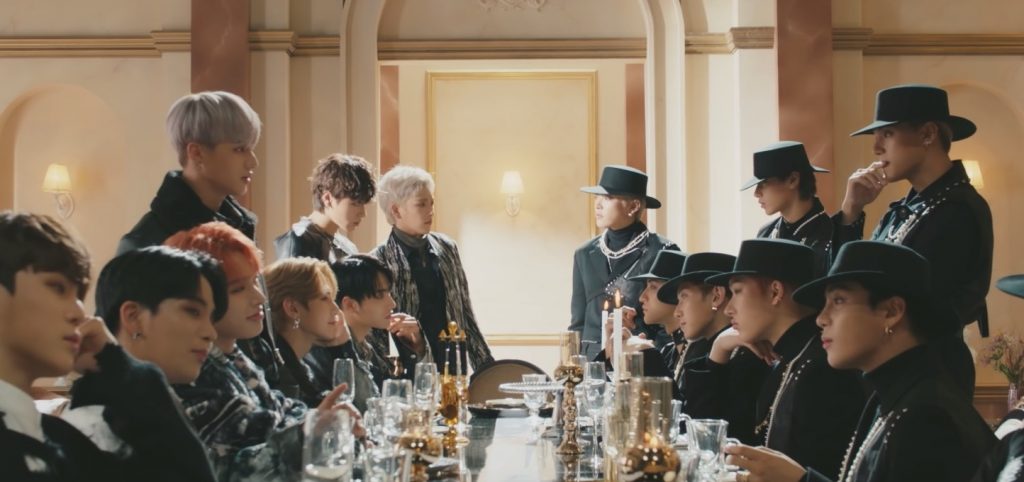
There is a little more rebellion to be found in “23”, where IU as an Alice figure gleefully plays around with the items on the table before pulling it all to the floor via the tablecloth. In a song exploring her own place as a growing adult in the world, this particular moment crystalises the sly, witty teasing around her image as Korea’s ‘big sister’. By destroying a beautifully laden table, IU creates mess and disarray from order, all in one swoop. Just as she’s attempting to do with her image.
Wonderland is not the only imagery that can be evoked by these table settings either. Renaissance paintings like The Last Supper illustrate iconic classical images of groups gathered around a table, portraying complex relationships of power. G-Dragon as the head of his table in “One of a Kind” is illustrating exactly what position he holds at the table, while BTS opened their stage performances of “Dionysus” confidently staring out from behind a marble counter.
In their calm proclamation of their “Cool” status, Weki Meki also chose a lavishly laden table, complete with biblically drooping fruit and glasses of red wine, to highlight their own comfortable power. As a place where social customs carry the most weight, asserting your control here shows the utmost authority over your own world, and pays homage to the classical images that showed the same.
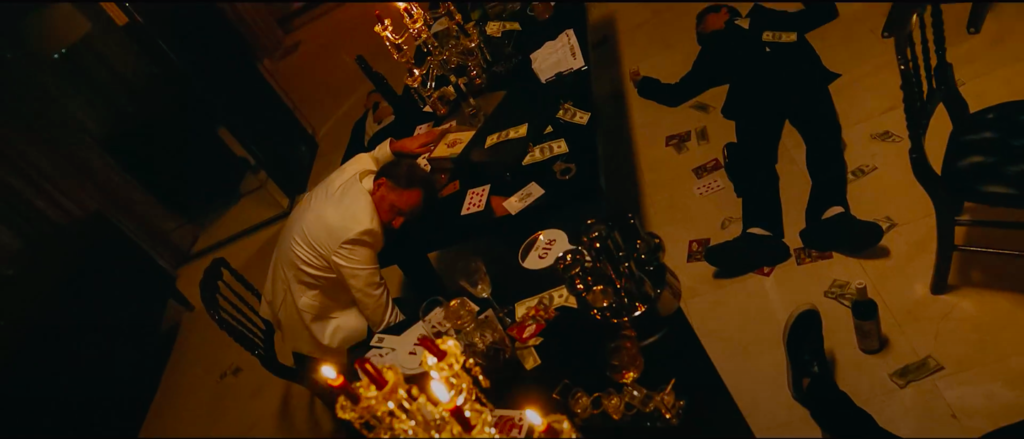
But combine power with opulence, and so often the result is the grand decay of decadence or debauchery. Hwasa’s use of the symbol in both “Twit” and “Maria” demonstrates this through the nonchalance and greed of her guests, indulging whilst ignoring the idol stomping all over them, or feeding them blood and trash.
More recently in Monsta X’s “Gambler” MV, the long, decorated table even becomes a space of violence, as a heated auction between the members and gangsters culminates in a mysterious blast that leaves bodies and cards strewn across it. Here the dining table setting lays bare the flip side of luxury, through displaying before us the seedy underworld that so often supports it.
We can even see hints of this in Red Velvet’s “#Cookie Jar”, where their cutesy mini-table of cakes and desserts is revealed to be crawling with ants before being gleefully squished. As much as there is luxury to this symbolism, there is also the possibility of the dark or sinister within that.
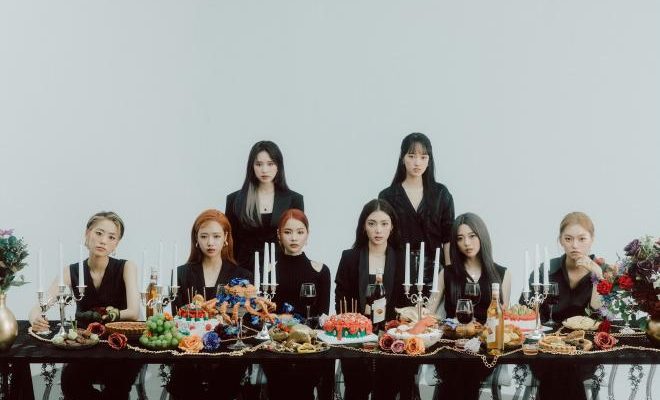
For such a seemingly simplistic symbol, almost mundane in its familiarity, there is a lot to unpick about the (sometimes) humble dining table. A place where families and traditions come together, a site for performance, opulence and anarchy, and a clear seat of power with the potential to corrupt — it’s all there. This sheer multitude of potential seems to answer as to why this symbol is so common in the visual language of K-pop. For a genre that so enjoys the playful in aesthetics, as well as a straightforward, unthreatening way to delve into deeper themes, the dining table is a near-perfect image choice. With this potential, it’s likely idols will be inviting us to take a seat for a long time yet.
(The Atlantic, Korea Times. Images via WM, HYBE LABELS, RBW, Cre.Ker Entertainment, KQ, Starship Entertainment and Fantagio Music.)
